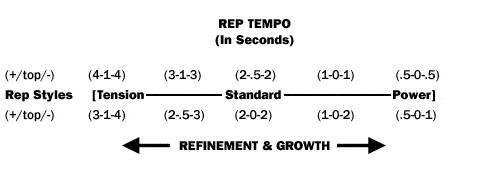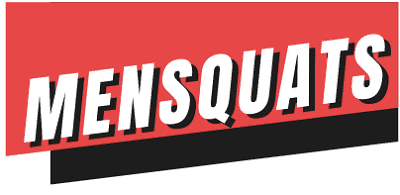[Ultimate Guide on] Best time under tension for hypertrophy?

What does Time under Tension for hypertrophy even mean? For your better understanding, the definition of time under tension (also called TUT) talks about the time in seconds taken to complete one repetition of an exercise.
It is a good measure of how much stimulus is provided to a muscle by a workout. Though TUT is the most imperative concept discussed, yet it remains poorly understood.
Each part of a repetition (eccentric, isometric, and concentric phase) can be given a tempo (rate of speed of motion), but the total repetition duration can also be used as an indicator of whether a rep is performed slowly or quickly.
[Tempo is denoted for (change in speed) and Time Under Tension is denoted for (Time taken) in a set]
Some strength training experts have argued that slow tempos (long total repetition durations) can be used to increase muscle growth. However, as others suggest, it is unlikely that one repetition duration can cause greater muscle growth than another, at least when training to muscular failure.
Despite the fact that TUT being a very effective way to lengthen the time duration of sets in a strength training exercise.
Speaking science, TUT can help to engage more muscle fibers and stretch them for a longer time which can be linked to the hypertrophy that results from training. This triggers both fast-twitch and slow-twitch fibers, which would increase substantially after being subjected to a stimulus caused by a workout.
Here in this guide, I will interpret the real meaning of time under tension for hypertrophy. So all your confusion about the topic could disappear.
(Save it for later)
Why Time Under Tension for Hypertrophy is important?
We know muscle fibers grow when a mechanical load is subjected to them, and hypertrophy is the result of the increased tension on a single muscle fiber within the muscle.
The mechanical load leading to an increase in the growth of single muscle fibers is the load exerted by the fiber itself. So the mechanical load must therefore be above the threshold limit, if not then there will be no hypertrophic benefits seen.

The force-velocity relationship must be a starting point for understanding hypertrophy if the muscle fibers are stimulated to increase in size after feeling mechanical tension. It determines how much tension a fiber can exert, with greater forces being achievable at slower speeds (low tempo).
However, *deliberately* Slow speeds involve incomplete motor unit recruitment because the force is lower than the maximum for a given weight.
Eventually, this means in simple language that slow speeds fail to train the high threshold motor units that control much of the larger muscle fibers that grow the most because of training stimulus.
Summary: For hypertrophy, slow bar speeds must be achieved by either heavy loads or fatigue, since only these methods can bring about a slow bar speed at the same time as high levels of motor unit recruitment.
If you are interested in knowing every observation found when training at low and fast tempos much in detail, then “What is time under tension by Chris Beardsley” article has no match.
What is our NEW definition of Time Under Tension?
So according to the traditional definition, slower lifting tempos usually involve a much longer TUT than faster lifting tempos. Just because slow lifting tempos don’t stimulate greater muscle growth. (As evident by the above graph)
But we consider TUT as a successful estimation of the hypertrophic stimulus. This is a confusing part of the science of hypertrophy.
The new definition of time under tension can make things more clear.
Which says that the total time for which fibers of high-threshold motor units are stimulated to the level of mechanical loading, which results from them shortening slowly.
This we could call “stimulating time under tension.”
What we do not note is that it is different when compared with stimulating time under tension between strength training sets with fast and slow lifting tempos.
Why is this?
In order to see why stimulating TUT is different between strength exercise sets done at a different lifting tempo, it helps to consider reps performed with and without fatigue, as fatigue increases the recruitment of more of the motor units.
Without fatigue, the amount of force that a muscle exerts at any speed is determined by 2 major factors.
- The number of recruited motor units and hence the number of muscle fibers activated.
- The shortening speed of stimulated muscle fibers is measured by the relation of force & velocity.
This means, the motor unit recruitment levels are measured by the level of mechanical load you put in, while the force/velocity relationship is determined by the actual amount of force that corresponds to the level of effort.
With fatigue, when heavyweights are lifted, the results are the same as when lifting without fatigue.
Because light or moderate loads are lifted at sub maximum bar speed, fatigue increases the level of motor recruitment, triggering new muscle fibers that compensate for the reduced force produced by pre-activated, but fatigued muscle fibers.
As fatigue approaches, slowly the level of motor unit recruitment reaches the high-threshold motor units. That stimulates hypertrophy.
How can we explain Best Time under Tension for hypertrophy in a workout?

Learn from the basic case of (Mr. A) and (Mr. B)
[Formula to calculate TUT: Time taken for every rep performed × Number of reps performed]
Let us assume that Mr. A is completing bicep curls of 12 reps with 20 kg dumbbells at (1-0-2-0) time under tension that count as 45 seconds, whereas Mr. B is doing the same repetition (12) with the same weights (20kgs) by applying time under tension of (3-0-1-0) that results in taking 60 sec for him to complete a single set.
“Here (1-0-2-0) means time taken (in seconds) to move weight in each movement (eccentric, isometric, and concentric phase) that forms 1 repetition.”
Similarly how you would count the volume of each set and determine progressive overload, but here based on our current understanding of how time under tension for hypertrophy works we have established a relationship b/w Time under tension vs Volume.
Where the volume of Mr. A and Mr. B might be the same (Volume= weight loaded × repetitions performed), but both of their Time Under Tension tell a different story.
The difference is 15 seconds. (Not that much, but substantial)
So what do you think: Which of the two is recruiting the most amount of high threshold motor units to stimulate meaningful amounts of hypertrophy?
Men B. Right!
The thing to take note of:
Recommended Book to read/ listen to Bigger Leaner Stronger: The Simple Science of Building the Ultimate Male Body. For those who want to be in the best shape of their life by dedicating a few hours per week: This book has already got 7000+ reviews with 4.5 stars.
What does Time Under Tension look like?
TUT is for the most part composed of 4 numbers. For example, 3010 or 4110 is the most used frequency of tempo.
If you’ve not seen these numbers previously, at that point it will resemble a baffling code to you.
Despite that, don’t stress at all. I will clarify to you the full utilization of tempo in every exercise session.
For you to get a better understanding of how TUT is determined? First dive into more points of interest of what are the movements in the repetition in which you will be utilizing TUT.
Training science defines TUT in a 4 digit (3010).
As it is, the most exact time under tension range that covers each of the 4 valid parts of a repetition.

Which can be broken down into:
- Eccentric contraction (negatives)- Lowering the weight [3]010
Let’s say you are performing bicep curls. When you bring down the weight lower, the eccentric contraction happens and the muscle elongates/ or stretches because of the weight it is holding.
An eccentric contraction is a phase where most single muscle fibers break because the power of gravity is superior to the power created by the muscle holding it.
Holding Eccentric Contraction is ignored by relatively every normal gymer on the planet in their most part of the training. Most just swing the weights from A to B point. This is a terrible mistake, as the eccentric contraction is the most essential in building size and mass.
You can achieve this by loading the bar just enough and controlling the weights rather than letting weights control you.
“Keep in mind [3]010, that ought to be three entire seconds to bring down the weight, not a hurried check of three.”
- Pause after bringing down the weight 3[0]10
This pause in the wake of bringing down the weight happens between the eccentric (bringing down) stage and the concentric (lifting weights up) period of a rep.
In the bicep curl, this is the point at where the forearm touches your lap.
Pauses are often considered the disadvantageous position of a lift, for example, when the dumbbells are in the base position amid a bicep curl exercise, here bicep muscles increase intramuscular strain and decline the strength reflex.
When you are lifting heavy, the pause taken here can diminish your power to take the weight back up and then you need to swing a little to generate an extra force to lift it up. Therefore, [0] second should be spent here.
- Concentric Contraction – Lifting the weight 30[1]0
The concentric contraction happens when a muscle cuts short, for example, when you curl your bicep from the base of a bicep curl exercise. We suppose an explosive contraction will happen with full speeding up.
For this situation, however, the hope is more vital than the real visual lifting pace of the bar. You should play out that lift as quickly as likely.
I know with heavyweights on a bar, this will really be slow and hard; however, your goal is still to curl the weight more rapidly. To isolate the concentration part, you need assistance through the eccentric portion.
Take 1 complete second to move weights in this movement.
- Pause subsequent to lifting the weight 301[0]
This phase (eccentric contraction) happens toward the finish of the concentric contraction stage, for example, when you have curled the bar completely at the highest point of the bicep curl exercise. Pause here in this “precious” position to boost the fast-twitch muscle fibers.
Those fast-twitch muscle fibers are the filaments that are vital for creating Power, Strength, and Size in a muscle.
Remember, I said the PAUSE on the muscle contraction. Not paralleling the weights by keeping your elbows too high and shifting the weights from bicep to shoulder muscles.

Here Time Under tension requires the athlete to use each muscle with a specific end goal to meet the requests of the hypertrophy gains. This power you to stay in charge and build hypertrophy gains they look after.
What is the Greatest Benefits of Time Under Tension workout?
Time under tension additionally gives you a chance to keep a substantial load on the hardest piece of the lift (eccentric stage).
This is the stage when the most injury is done to the muscle, which will bring about more noteworthy muscle growth results.
Likewise, applying TUT can lessen you to train with momentum or limit certain segments of a lift that don’t need to be getting work, helping you stay focused.
Thus, the Time under tension for hypertrophy is doubtless a standout amongst the most vital yet most overlooked exercise variables.
Without it, you are not completely in control of the outcomes of your sets and just would quickly GET IN and GET OUT of the set without training the actual muscle.
Rep (time under tension) is the most profitable training, and by this, you can be united into 90% of lifts.
The Benefits that it gives over conventional lifting weights are:
Fact – More pressure and harm to the muscle cells implies more muscle development and a boost of strength in the coming time!
In this manner, the Time under tension for hypertrophy must be endorsed and institutionalized in each weight lifting program to guarantee the expected training effect.
This applies to strength, muscle building, fat loss, performance sports, and any other objective you can consider.
The question to ask: So, if Time under tension is so authoritative to impact your muscle gains and training with full output. Tell me how can we make our own written training plan?

How to write a time under tension workout?
If you aren’t utilizing time under tension till now in your own training program, or your coach hasn’t advised you to include it, at this point, there is a gigantic piece missing if you are really serious about getting the greatest hypertrophy results.
“Three continuous sets of 12 reps done in 12 seconds without utilizing Time Under Tension for hypertrophy means nothing.”
For making new muscles, the ideal time under tension workout would be 40-sec minimum to 90 seconds.
That means if you do your 3 sets of bicep curls in 20 seconds each, instead of applying TUT and completing it in 30-40 seconds, you are not putting enough mechanical stress to gain the benefits of muscle hypertrophy.
How to design?
To design a workout plan by putting TUT in exercises isn’t unique.
You simply need to remember the rule of progressive overload which expresses that if a training plan is to deliver the wanted result, the intensity of an exercise should be made difficult to execute with each progressing set.
The progressions to a set ought to be made with small increments in weight or reps, not bigger changes. Progression and overload are linked.
You could outline a mesocycle of 3 months putting 4 exercises of 3-5 sets of each muscle. Each consists of 8 to 12 reps to transient muscle fatigue.
Even so, once a gym-goer starts to experience muscles growing because of enhanced enrollment of fast-twitch muscle fibers, the number of sets should be increased to put on an overload and make the training impact.
At that point, time under tension would compound its effects. This is the time when muscle fibers are exposed to mechanical strain. Putting with the right intensity and time under tension is basic for making the wanted boost for growing muscle definition or size.
Suggested Tempo Range Based Upon Weight Training Goals
| Training | Eccentric (seconds) | Isometric (seconds) | Concentric (seconds) |
| Endurance | 2 – 6 + | 1 | 1 – 2 |
| Hypertrophy | 2 – 4 | 1 | 1 – 2 |
| Strength | 1 – 2 | 1 | 1 – 2 |
To begin with this you should start lifting weights using a moderate tempo range (3120 – 3110) to utilize their motor units to actuate fast-twitch muscle fibers.
Why did I say utilize moderate tempo at first? Because you won’t get sore and adapt to the load when we would be applying for higher tempos, which can be attributed to lengthy eccentric stages; therefore, slower tempos combined with higher rep ranges expand the amount of eccentric work done.
Make certain to note the number of sets performed and TUT used, if it makes you extra sore reduce it.
After which you gain strength and reformed to a newer form of physical demands, then change to 3:1:1:0 tempo and the number of sets can be long-drawn-out to sensibly build the training trauma enough to make the essential overload and keep making changes in the future.
Applying an overload by just increasing the number of sets per exercise requires extra time.
A training program can be made to progress the level of trouble and raise the measure of training shock without extending the length of the training period.

There are a relatively endless number of approaches to sort out sets in an exercise. Which stimulates a physical change which is required to put metabolic or mechanical weights on the body, both of which help you achieve your desired goal, for example, weight reduction, muscle development, or upgrading hypertrophy.
When one knows how to adjust the reps, Time under tension, and tempo, then he/she can keep the workouts moderately predictable, yet increase or drop the level of pain by doing sets with negligible rest.
Or else he could utilize a harmful tempo to expand the speed of the motor unit and alter the metabolic work rate.
Key Takeaways
Time under tension is a fair indicator of the delivery of hypertrophic stimuli provided by training, but this is only if we measure the time during which the fibers of high-threshold motor units are exposed to high levels of stress/mechanical load, as shown by a slow fiber shortening speed.
No matter if we are using a fast or a slow tempo in our training, the stimulating TUT is the same. Only in the last reps, when bar speed has decelerated in the fast tempo set, and when during slow tempo set when motor unit recruitment has accelerated, is muscle growth most happens.
If the bar speed varies, the slow tempo takes fewer reps to complete a set, since fatigue has already made you tired.
The Bottom Line
There are mixed opinions on best time under tension for hypertrophy, which will produce the best bodybuilding results.
Be that as it may, if you pick a range of (2-2-2, 1-1-4, 2-1-3…) and go for a time under tension between 45–90 seconds, then you are basically guaranteed to see results.
But if you aren’t valuing TUT, you aren’t being steadfast with your training. Three sets of 10 reps without a controlled movement is nothing.
For one person that may take 40 seconds, and for another, it may just take 15 seconds.
You may add a couple of kilos to a lift in 1 exercise at the same time if you do it in a fraction of the time; you haven’t gained anything by any means.
If you need to get an outcome from your training, you should control every one of your factors.
Time under tension is something we see fouled up every so often. Apart from when somebody is following a TUT, they are still typically rolling things. Each second is one FULL second. (not partial)
At whatever point you enter an exercise, you must ask yourself at what time am I completing each set.
Alright, that’s all for this article.
I hope you have learned something here that would you take away into your workouts.
Comment below and let me know how many seconds of time under tension you utilize in each set?
Read more of our articles:
- How to boost levels of testosterone? (Point #7 is Weird One)
- How to Reduce Muscle Pain After Workout in 2020?
Thank You. Stay strong!
Sharing is caring. ❤




